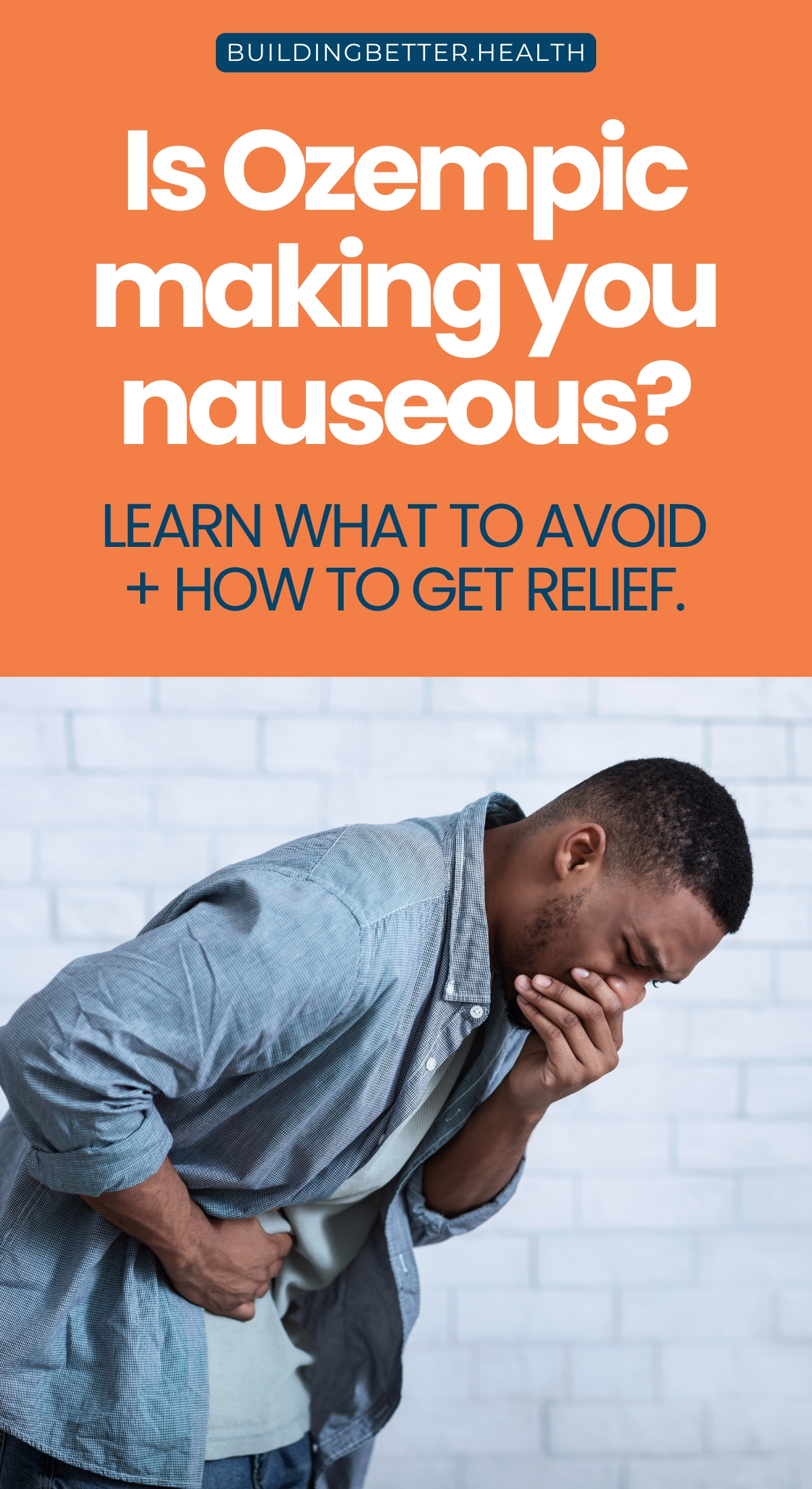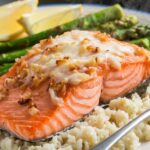
Please note: This website contains affiliate links. As an Amazon Associate, we earn from qualifying purchases at no additional cost to you.
Ah, Ozempic—the little injection making big waves for weight loss and diabetes management. It’s like that magical friend who solves half your problems with one phone call. But then, just as you’re feeling like you’ve unlocked the cheat code to better health, nausea shows up to crash the party.
Sound familiar? You’re not alone. For many people, nausea is the most common side effect when starting Ozempic. The good news? It’s not forever, and there are plenty of ways to keep it in check. With a little strategy (and maybe some ginger tea), you can ditch the queasiness.
Let’s dive into why Ozempic can make your stomach turn and, more importantly, how to stop it in its tracks.
- Why does Ozempic / Wegovy cause nausea?
- How to Avoid Nausea While Taking Ozempic / Semaglutide
- What to Do If You’re Already Feeling Nauseous
- When to Seek Medical Advice
- FAQs
Prefer to listen to this article?
Why Does Ozempic Cause Nausea?
Ozempic works by mimicking GLP-1, a hormone that slows digestion and helps regulate appetite. It’s like putting your stomach in “slow and steady” mode instead of “race to the finish line.” While this is great for keeping you full and curbing cravings, it can also leave food lingering in your stomach longer than usual—leading to that queasy feeling.
The upside? This nausea is usually temporary. As your body adjusts to the medication (and your stomach gets used to the new tempo), it often improves. Think of it as your digestive system learning to dance to a slower beat—it’s a little awkward at first, but it gets better with time.
Tips to Avoid Nausea While Taking Ozempic

Start Low and Go Slow
Your dosage matters. Jumping into a higher dose too quickly is like cannonballing into cold water—it’s going to be a shock to your system. Most doctors recommend starting at the lowest dose and gradually increasing it to give your body time to adjust.
Eat Smaller Meals
Big meals + slow digestion = bad news. Instead of three large meals, try spreading your food out over 4–5 smaller meals. Not only does this make nausea less likely, but it also keeps your energy steady throughout the day.
Choose the Right Foods
Your stomach is a little extra sensitive right now, so treat it gently. Stick to:
- Lean proteins like chicken, fish, or tofu.
- Simple carbs like rice, crackers, or oatmeal.
- Steamed or roasted veggies (nothing too fibrous or greasy).
Avoid anything that’s spicy, fried, or overly rich. As much as you love nachos with extra cheese, they might not love you back right now.
Time Your Dose Wisely
Consider when you take your Ozempic. Some people find that dosing in the evening minimizes nausea because they can sleep through the worst of it. Experiment with timing to see what works best for you.
Stay Hydrated
Dehydration can amplify nausea, so keep sipping water throughout the day. Herbal teas or electrolyte drinks (low-sugar options) can also help if plain water isn’t cutting it.
Need some ideas on what to eat? Check out our 7-Day Meal Plan for new users of Ozempic / Semaglutide….
What to Do If You’re Already Feeling Nauseous
Here are a few simple ways to get some Ozempic nausea relief:
- Ginger to the Rescue: Ginger isn’t just an old wives’ tale—it’s a natural nausea fighter. Ginger tea, ginger chews, or even a few slices of fresh ginger in hot water can work wonders.
- Try Peppermint: Peppermint tea or essential oils can have a soothing effect on your stomach. Just don’t overdo it, or you might feel like you’ve swallowed a candy cane factory.
- Think “bland but comforting.” When nausea hits, plain crackers, toast, or a small bowl of rice can help settle your stomach.
- Adjust Your Position: Stay upright after meals to help your stomach do its thing. Lying down immediately after eating can make nausea worse, so give your digestion a fighting chance by sitting or standing for a bit.
- Consider Medication: If home remedies aren’t cutting it, talk to your doctor about anti-nausea medications. They can recommend safe options to keep you comfortable while your body adjusts.
When to Seek Medical Advice
While mild nausea is common, there are times when you should consult your healthcare provider:
- If nausea is severe or persistent.
- If you’re experiencing frequent vomiting or signs of dehydration (e.g., dark urine, dizziness).
- If nausea is interfering with your ability to eat or function normally.
Your doctor may adjust your dosage or suggest alternative solutions to make Ozempic work for you without making you miserable.

FAQs About Ozempic and Nausea
Q: How long does nausea last on Ozempic / Wegovy?
A: For most people, nausea improves within a few weeks as their body adjusts. However, it may return temporarily when increasing doses.
Q: Can I prevent nausea altogether?
A: While there’s no guarantee, starting with a low dose, eating smaller meals, and avoiding trigger foods can significantly reduce your chances.
Q: What are the best foods to eat when I feel nauseous?
A: Stick to bland, easily digestible foods like crackers, toast, bananas, rice, and lean proteins.
Q: Should I stop taking Ozempic if nausea is severe?
A: Don’t stop without talking to your doctor first. They can adjust your dosage or recommend ways to manage nausea more effectively. There are cases where people have had to stop using this GLP-1 medication altogether, but it’s key that you work with your healthcare provider on the right options for your specific situation.
Conclusion
Nausea might feel like an unwelcome guest on your Wegovy / Ozempic journey, but it doesn’t have to overstay its welcome. With these tips and a bit of patience, you can manage (or even avoid) nausea while staying on track with your goals.
Remember, this is just one small hurdle on your path to better health—and you’re more than equipped to handle it. Armed with crackers, ginger tea, and a few smart strategies, you’ve got this!

Please note: This website contains affiliate links. As an Amazon Associate, we earn from qualifying purchases at no additional cost to you.










